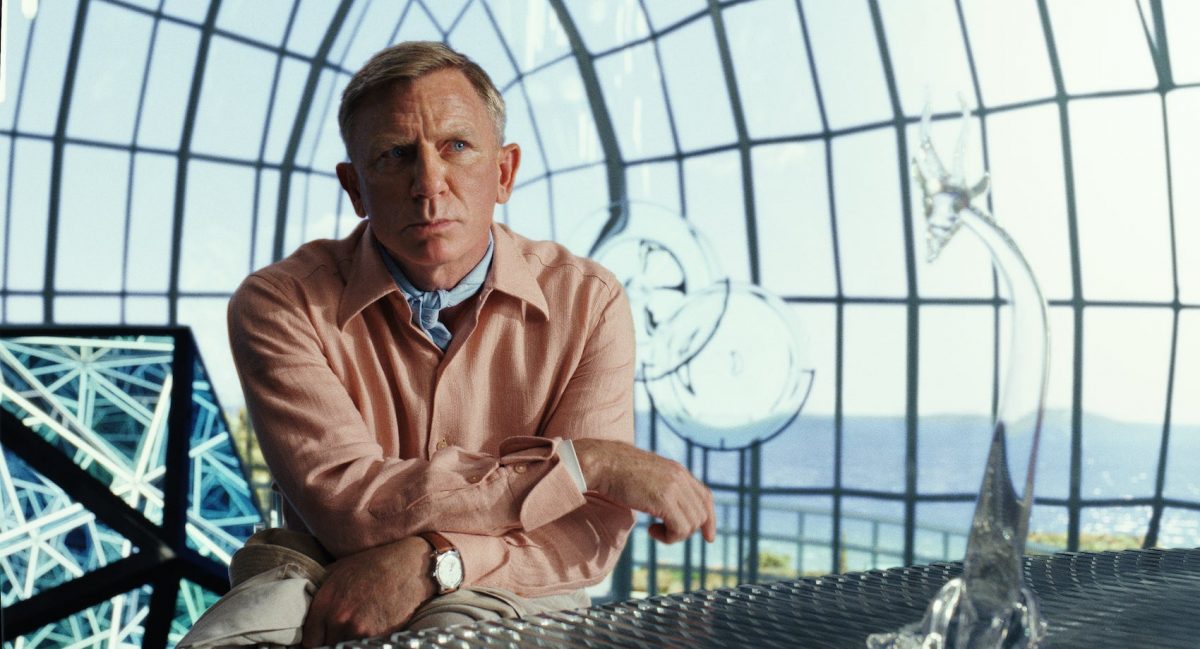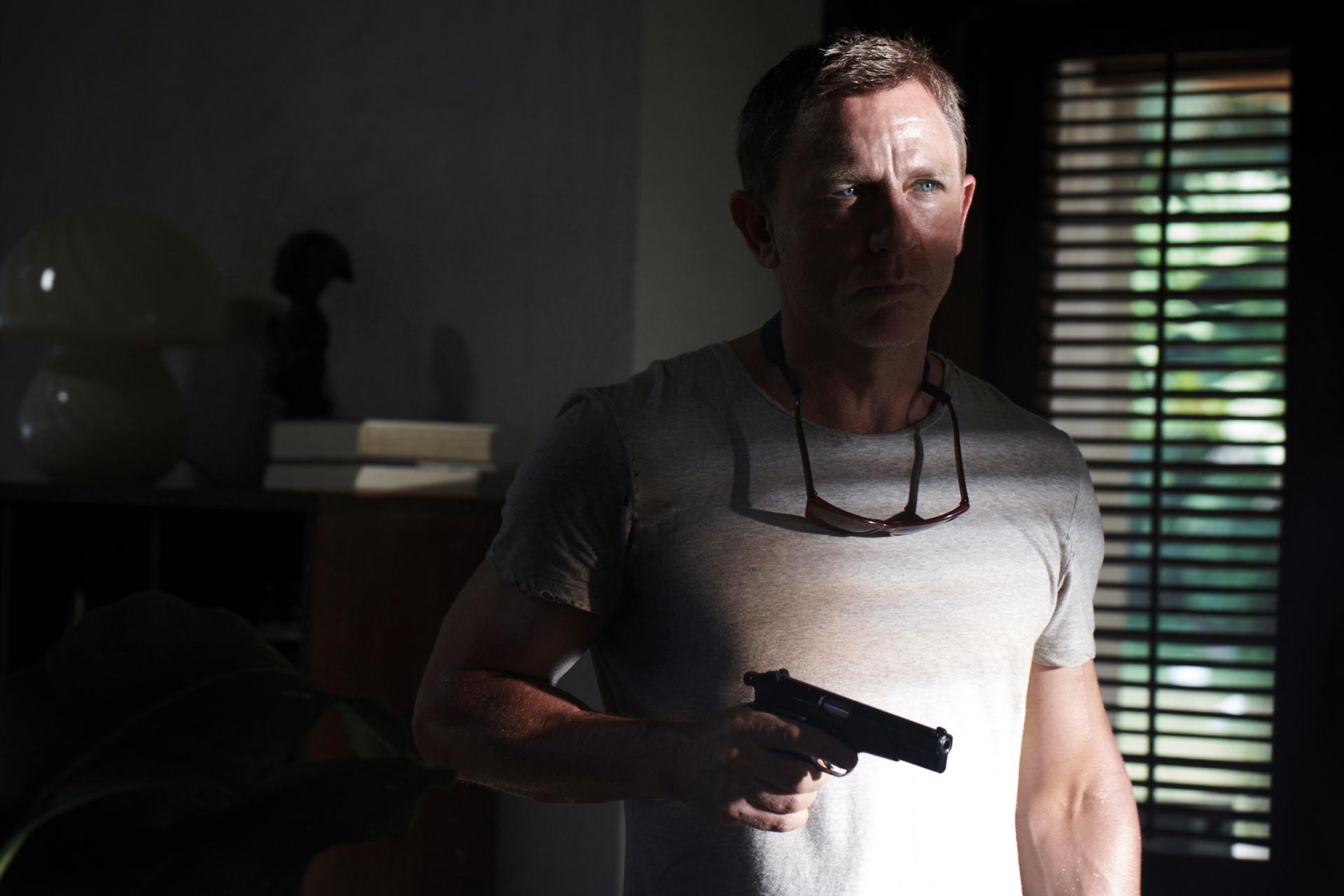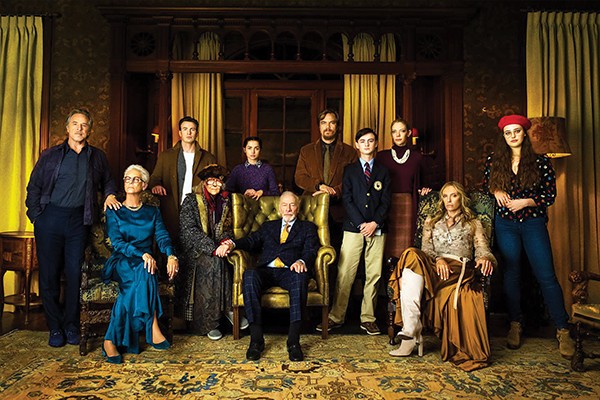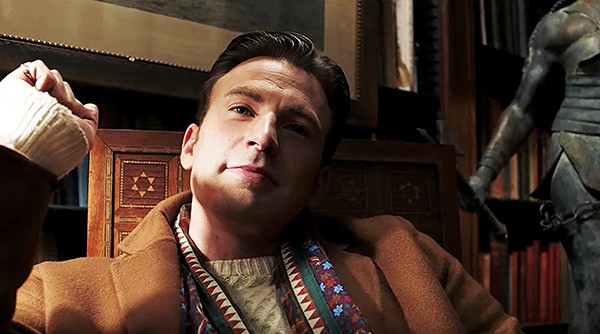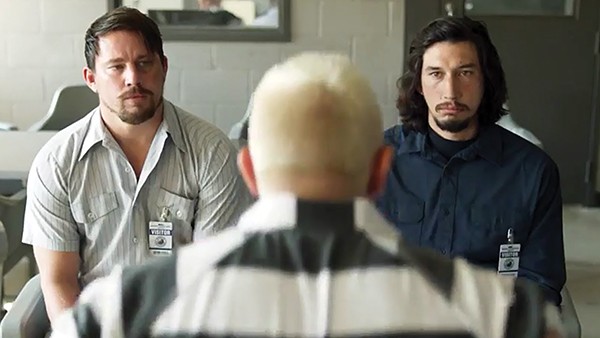During the height of the streaming boom, when Netflix, Disney, and HBO were swimming in speculative stock market money, studios looking to feed the online content machine made a lot of big deals with filmmakers. The one that raised the most eyebrows was Rian Johnson’s $469 million deal with Netflix for two sequels to the writer/director’s sleeper hit Knives Out. $234 million a pop is in line with what Johnson had to work with when he made Star Wars: The Last Jedi. But Knives Out was a classic cozy mystery in the style of Agatha Christie. There were no special effects-heavy space battles or big expensive stunt sequences. One of the reasons these kinds of stories became so popular in the early days of sound pictures is that they’re cheap to produce. How was Johnson and longtime producing partner Ram Bergman supposed to spend all that money?
The answer presented by Glass Onion: A Knives Out Mystery is to give everyone Johnson’s ever wanted to work with a cameo. Serena Williams’ cameo even makes a joke of the money burn rate. As “the world’s greatest detective” Benoit Blanc (Daniel Craig) has an emergency conference with Andi Brand (Janelle Monáe) in the gym of tech billionaire Miles Bron’s (Edward Norton) island estate, a video screen in the background promises a private session with Serena. As they speak, what seems at first to be a still image of the tennis star moves slightly. Then Williams, bored with the details of a mystery she isn’t privy to, speaks up. “So you don’t want to work out?”
No, snaps Blanc. We’re busy.
“Whatever. I’m still on the clock,” she sighs, then returns to her crossword puzzle book.
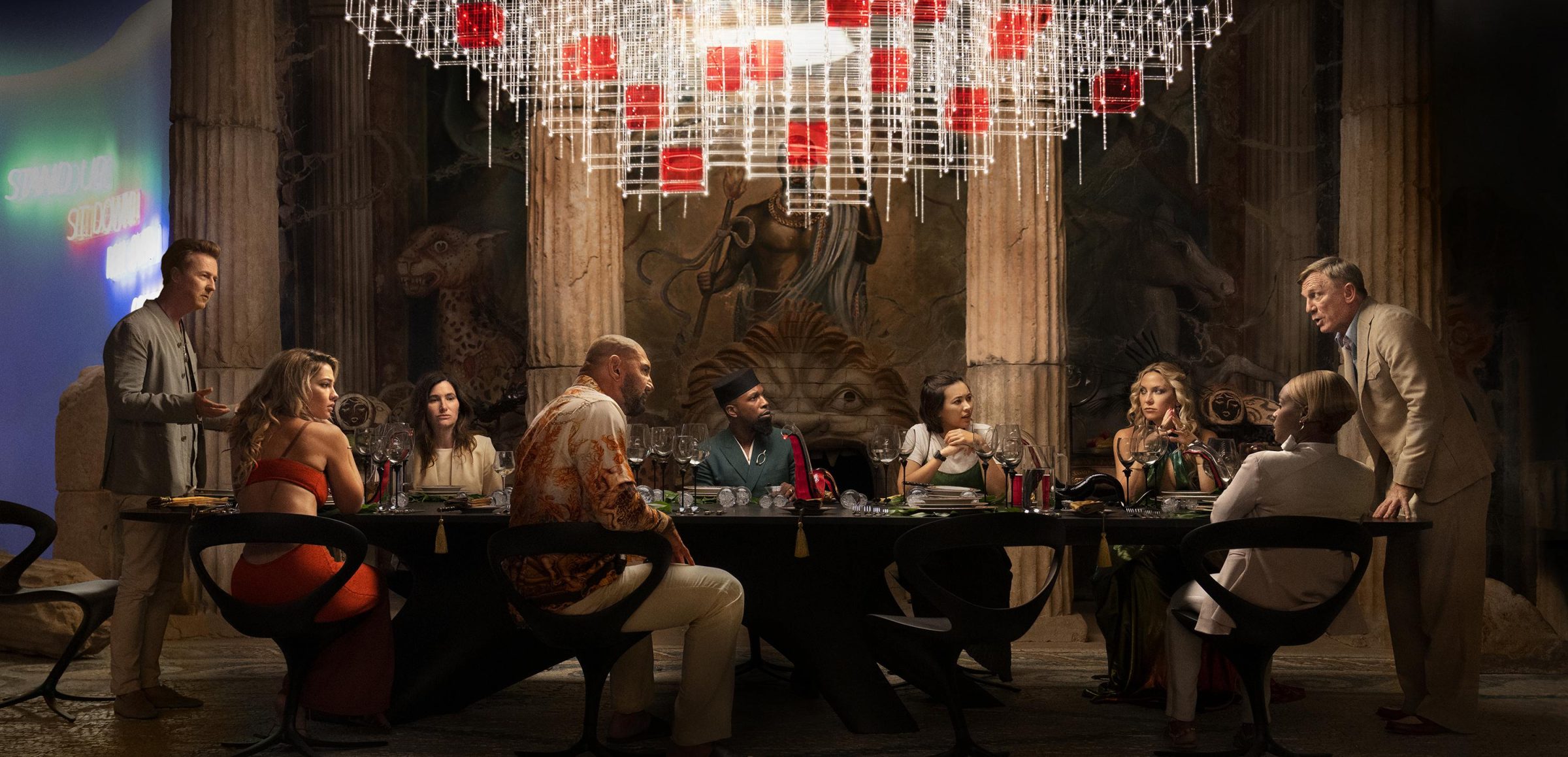
Serena Williams is not the only A-lister in a funny cameo. When we first see Blanc, he’s stuck inside his New York apartment during the height of the pandemic quarantine, playing Among Us on Zoom with Kareem Abdul-Jabbar, Natasha Lyonne, Angela Lansbury, and Stephen Sondheim — and losing. But his pandemic blues are relieved when he’s one of five people invited to a murder mystery party weekend at Bron’s palatial estate on a Greek island, known as the Glass Onion.
The group, who Miles calls his “beautiful disruptors,” includes Claire (Kathryn Hahn), the Governor of Connecticut who is running for a Senate seat; Lionel (Leslie Odom, Jr.), lead research scientist for Miles’ rocket company; Birdie Jay (Kate Hudson), supermodel and fashion designer; and Duke (Dave Bautista), a gun-toting, men’s rights YouTube influencer. Andi, Miles’ former partner in his technology company, is also invited, but the group seems very surprised when she actually shows up. Blanc quickly susses out that these alleged old friends don’t actually like each other very much. When the murder mystery dinner party game is interrupted by a real murder, Blanc (and Johnson) are in their element. I won’t spoil what comes next, except to say that the “onion” in the title refers to layers upon layers of flashbacks that Johnson uses to reveal the mystery and its ultimate solution.
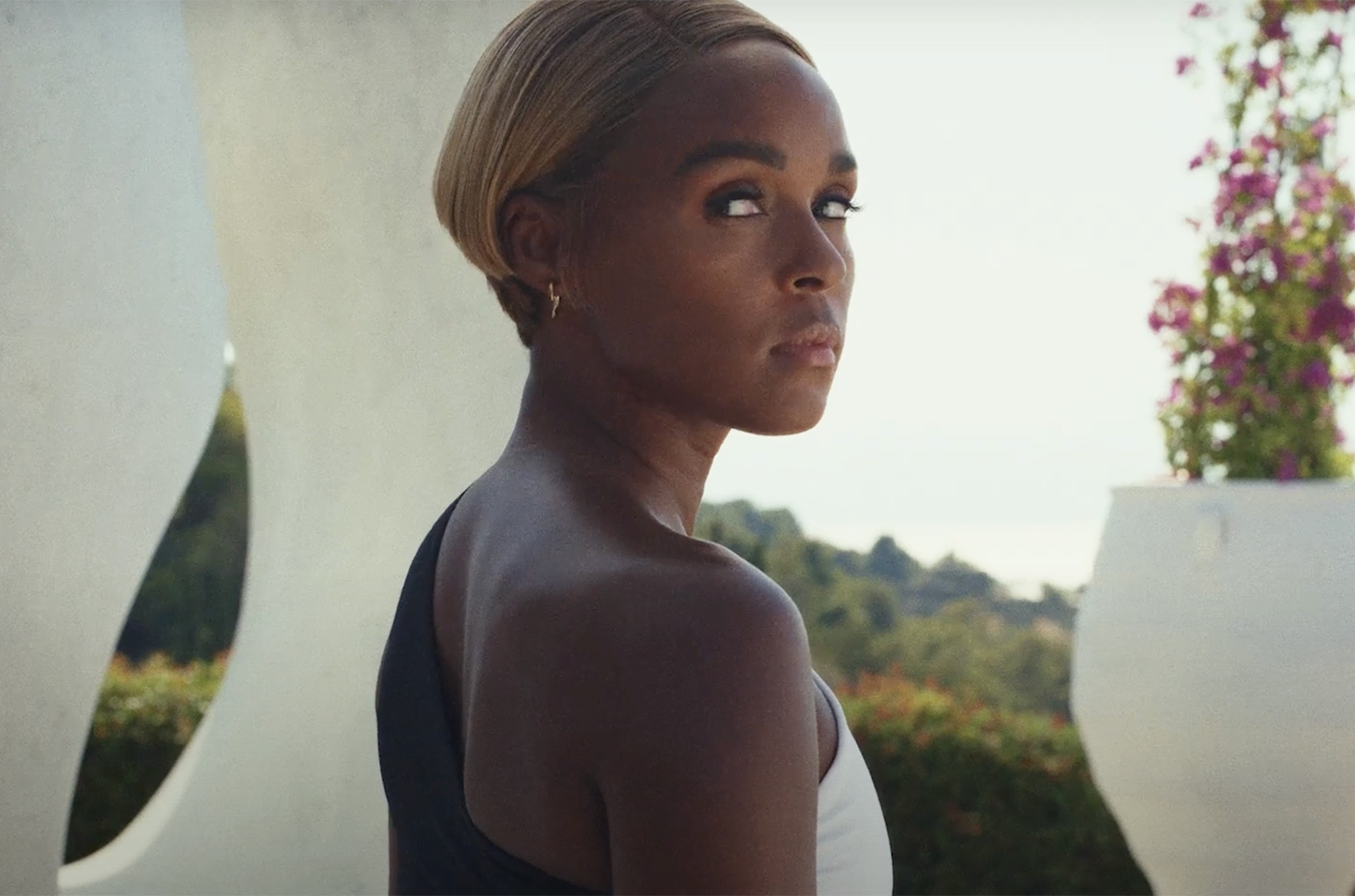
An all-star cast solving a murder conjures visions of bad ’70s haircuts phoning in performances. But Jonson knows how to assemble a cast with chemistry, and treats Glass Onion like a Robert Altman dinner party movie, where everyone’s having fun and giving it their all. Monáe is captivating as a woman whose secrets have secrets. Hudson disarms with a ditzy blonde routine before revealing the icy calculations beneath her facade. Odom and Hahn, used to being scene stealers themselves, are excellent, but feel a little underutilized.
Like Knives Out, Glass Onion fronts as a frothy potboiler just out for a good time. But in its heart, it’s a scathing satire of our oligarchic ruling class. Exposing Miles, his “genius” Elon Musk figure, as a garden variety sociopathic manipulator feels particularly timely on Johnson’s part. Netflix execs might feel some buyers remorse when they see Monáe gleefully smashing the astonishingly expensive set, but we the audience get our money’s worth.
